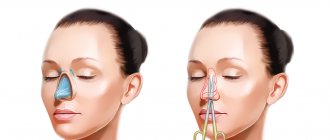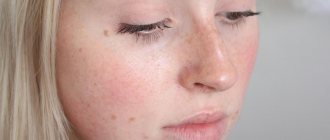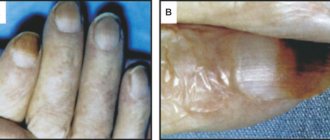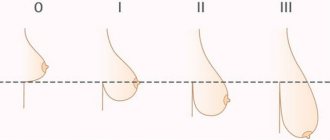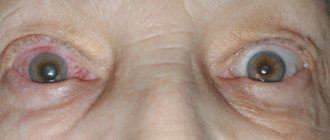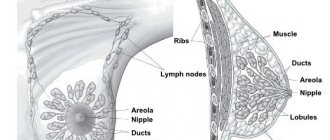Updated: 06/29/2021 12:21:50
Expert: Lochukov Denis Aleksandrovich
An undeniable fact is that the development and formation of girls as an adult organism begins earlier than that of boys. In addition, the female body is many times more complex than the male one. This is due to the fact that a woman is intended to conceive, bear and give birth to one more, and quite possibly more, new individuals of the human race. To put it simply – children.
How exactly and in what time frame girls develop physically, the rate of growth and the characteristics on which it depends will be discussed in this article.
Physiological reasons
Puberty is the age when the body grows most actively. Development proceeds in fits and starts, unevenly. Over the course of a year, a child can grow by 7-10 centimeters and increase body weight by 5-9 kilograms. The skeleton becomes stronger, the muscles improve. The heart muscle grows rapidly in length and width, blood pressure and the rhythm of the heart change.
Along with the intensive growth of the body, the shape of the body also changes. Gender characteristics develop, hormonal levels change, the endocrine system is rebuilt, and the endocrine glands are activated. Moreover, puberty in girls begins 1-2 years earlier and ends by 15-16 years. At the age of 10-12 years, they outstrip boys in height. However, by the age of 15-16, boys are already significantly taller than girls and continue to grow until they are 18-20 years old.
It is very difficult for the nervous system to adapt to changes, since it simply does not have time to adapt to active growth. Therefore, the psyche is often in a state of excessive excitement or, conversely, tries to slow down the processes and goes into pronounced inhibition.
Due to all the physiological changes, temporary disorders develop in the child’s body:
- jumps in blood pressure – hypertension is often observed, but hypotension is also a normal option;
- dizziness, headaches;
- poor concentration, distracted attention;
- rapid heartbeat (tachycardia), a feeling of tightness in the heart area;
- dyspnea;
- fainting conditions;
- fast fatiguability;
- increased excitability, sleep disorders.
Physiological processes directly affect the health and behavior of a teenager. In order for the body to be fully formed and the growth spurt to be successful, it is necessary to provide high-quality support for the processes: proper nutrition, saturation of the diet with vitamins and microelements, adequate physical activity.
It is important to consider that there are significant individual differences in physical development and puberty. The age at which active changes begin in a child’s body may deviate from group norms, and this should not cause concern.
What can affect growth
Indicators of weight gain and height in a child depend on three reasons:
- Heredity.
- Nutrition.
- The quality of life.
If the parents are taller than average, then the girl is more likely to be tall. Young ladies in their height often follow the direction of the “female line” of the family and will grow up the same way as their mother, grandmother or aunt.
There is a formula for calculating a person’s growth potential based on genetic data, however, the correction for it depends on the presence or absence of certain conditions and is plus or minus 10 cm. For a girl, this formula looks like this:
Girl's height = sum of parents' height (cm): 2 - 6.4 cm (Dr. J. Hawker's formula).
As for the child’s living conditions and its quality that affect his growth, these include:
- favorable living conditions;
- frequency of being on walks, nature and generally outside the home and intensity of sunbathing;
- attention from parents to the child and activities with him;
- sufficient attention to his health.
An important factor for good growth is sleep. It should be discussed in more detail. the fact that children grow in their dreams. The release of growth hormone into the circulatory system occurs at night, when the child sleeps soundly. The bulk of the hormone is produced between 22.00. — 24 00., exclusively in the deep sleep stage. Therefore, for the correct and planned growth of children, it is necessary that at this time they are already asleep, and so soundly that their sleep is already in the deep stage. The duration of sleep is also important; a girl under 12, and sometimes 14 years old, needs ten hours of sleep, and an older girl at least 8.
Adults should closely monitor children's growth development status. Today there is such a congenital disease as somatotropic insufficiency, caused by a lack of growth hormone. From birth, the pituitary gland does not produce enough growth hormone.
At birth, such a child has no deviations in height and weight. Gradually he “loses”, at 2 years he is 7-8 cm short of the norm, at 80-85 cm, at 5 years this lack of growth becomes even greater. As such a child grows up, his growth retardation compared to his peers becomes more and more evident. This may result in the girl’s height at the end of the period being less than 130 cm. If this disease is detected in a timely manner and correctly diagnosed, it is now quite treatable by using artificially synthesized hormones. A course of therapy allows you to catch up with the height of your peers, and then continue to grow on your own. Parents should measure their children and record the results annually. An indicator of the norm will be the result of a child’s growth by 4 or more centimeters after four years, but if this is not the case, you should contact a specialist.
Psychology of teenage crisis
The main reason for the development of a crisis in adolescence is a significant gap between the physiological and social, emotional maturation of the individual. As we have already said, physiological growth during this period exceeds the rate of mental development as much as possible.
Physiologically, a teenager becomes an adult, mature person in a short period of time. Outwardly, yesterday's child looks like an adult, begins to feel like one, but is not yet fully ready for independence and responsibility. Social maturation takes much longer.
As a result of such a gap, conflicts with adults arise. The child wants to feel free and independent, but in reality he still cannot cope with serious responsibility. Conflicts and misunderstandings arise on this basis. The personality of a teenager changes so much that sometimes it seems that the child has simply been replaced.
Puberty is expressed not only at the physiological, but also at the mental level. Moreover, the mental aspects of puberty can arise much earlier than physical maturation. Adolescents undergo gender identification and orientation and begin to perceive themselves and others according to gender. Scientists agree that gender identification occurs to a greater extent under the influence of sociocultural factors than biological ones. The decisive role is played by the patterns and stereotypes operating in society.
During the same period, romanticism developed - the desire for emotional intimacy. Teenagers begin relationships that involve spending time together and having intimate conversations. The first love appears. In this case, physical intimacy is not obligatory; the platonic context comes to the fore, and only then the sexual one.
Taking into account all the psychological changes occurring in a teenager, a crisis is necessary to solve a number of problems. As a result of successfully overcoming this developmental leap, the teenager:
- undergoes gender identification, takes on a male or female role;
- accepts his appearance with all changes;
- changes the form of communication with others: parents, peers, etc.;
- accepts a new style of relationships, transforms from a child into an equal, responsible member of society with mature behavior;
- develops interests, finds directions for developing their abilities, and subsequent professional guidance.
Ah, thighs!
Every girl has probably encountered such a problem as sagging sides. But often, instead of practicing, we like to say: “Those hips are wide.” This is a stupid “excuse” that many girls live by.
But there really is a woman's body shape when she has big hips. This is often inherited. Therefore, if your mother has large pelvic bones, then you don’t have to worry, when you also have it, you cannot change hereditary physiology.
To understand what shape our body will be, namely the sides, you need to know at what age girls’ hips grow. Then you will be able to understand whether your figure will change somehow or whether you need to work with what you have. The hips grow with the body. If your growth slows down, so will your hip growth. In principle, you will not see any significant changes after 22 years. But if, for personal reasons, you gain a lot of weight, then your hips will expand to somehow support a layer of fat on the skin.
Phases of the teenage crisis
Psychologist Lev Semenovich Vygotsky identified three basic phases in the teenage crisis:
- Negative, or pre-crisis . The earliest stage, which can show the first signs as early as 9-10 years. Characterized by the beginning of a transition to a new type of interaction with others. The child begins to abandon the old value system, breaks stereotypes, changes his attitude towards himself and others. Childhood relationships with parents no longer suit him, but he is not yet ready for an adult system of interaction. The child develops new interests, different views, and the environment begins to change.
- Directly crisis stage . Often this stage reaches its peak at 13-15 years of age. It can manifest itself in different ways: from maximum protest, conflict and irritability in all areas of life, to a gradual transition to new roles, relationships and self-perception. New ways of thinking develop, new opportunities and interests appear. The teenager defends his opinion and the ability to make decisions independently, and separates himself from parental influence and control.
- Positive, or post-crisis . It is considered the final stage of the pubertal crisis. During this period, the teenager already forms values and priorities, determines the vector of further development and interests. Puberty is almost over, your place in society among your peers is determined. The teenager strengthens the core of interests and continues to develop them in the future.
It is impossible to say exactly how long each phase lasts. In many ways, the duration of the stages depends not only on the teenager, but also on the correct reaction of parents to the manifestations of the crisis.
Puberty: Hygiene
“Critical days” require careful hygiene. A girl should wash her genitals with clean water at least 2-3 times a day and take a shower daily. The gasket needs to be changed every 3-4 hours. Wearing the same pad for a long time promotes the proliferation of pathogenic flora and can cause inflammation. Bathing, sex and douching during menstruation are strictly contraindicated. The girl can do normal work, but must avoid serious overload, hypothermia and overheating.
Manifestations of crisis in adolescence
The severity of the crisis may vary. At the primary stage, psychologists identify two main features that are present in almost every child:
- Decrease in school performance and performance . Physiological and mental changes, changes in the type of thinking directly affect the child’s learning. He copes poorly with creative tasks, loses concentration and interest in learning. Even minor criticism can discourage you from delving into a certain area or topic.
- Negative reactions . Even the most docile children strive to separate themselves from their parents, and therefore often display hot-tempered reactions even in familiar situations. Natural manifestations of negativism are pessimistic moods, increased irritability, dissatisfaction with oneself, whims, and nervousness.
As we move from one phase of the crisis to another, the manifestation of reactions increases, which can be divided into three large groups :
- Emancipation reactions . The child wants independence, and this reaction is expressed in avoiding parental control, denial of habitual values, and a retreat to communicate with peers. The teenager demonstrates independence and autonomy, demands that his equality be recognized and his opinion be taken into account.
- Self-affirmation reactions . Mainly expressed in communication with peers and showing interest in the opposite sex. During this period, friends become the main authority, and interest in romantic relationships appears.
- Reactions to searching for new interests . During adolescence, a teenager’s interests are scattered in many directions: searching for oneself, striving for the unknown and novelty, immersion in information and communication spheres. The teenager is deeply interested in some intellectual and aesthetic direction (music, cinema, philosophy, etc.), seeks out physical and manual practices (works on his body, increases endurance, strength), develops leadership qualities (trying to take a worthy position among his peers), immerses himself into the information field (spends a lot of time on the Internet, social networks).
Features of the crisis in girls and boys
Puberty progresses differently in girls and boys. In girls, as a rule, symptoms of the transition period begin to appear at the age of 10-11 years. At the same time, the signs of crisis are rather weakly expressed in them. Boys enter adolescence later - from about 12-13 years old. But the course of the crisis period is much more pronounced. This is mainly due to the fact that society traditionally has stricter requirements for boys and men than for girls and women.
In adolescent boys, the following traits are most pronounced:
- Aggression, anger . Behavior changes in relationships both with peers and with adults - parents, teachers. This is mainly due to an increase in testosterone production in the body.
- Sudden outbursts of emotions . Mood swings, like unreasonable aggression, are caused by hormonal changes.
- Dulled feeling of fear . Teenagers often engage in extreme sports and decide to take rash actions. The reason is also a change in testosterone levels.
- The desire for independence . Boys want to be seen as grown men. To do this, they need to solve problems on their own, which is not always possible for a teenager. The inability to cope with troubles on your own causes a disturbance in mental balance.
- The desire to lead a lifestyle typical of adult men . Teenagers want to do loud things and even heroic deeds. However, they do not always realize the consequences of rash actions.
- Interest in intimate aspects of life . Manifests itself in a strong attraction to the opposite sex.
- Preoccupation with appearance . It is wrong to think that boys are less concerned about their appearance than girls. Changes in appearance make teenagers vulnerable, and dissatisfaction with their own appearance leads to isolation, uncertainty, and low self-esteem. They do not tolerate criticism of themselves, and they perceive any rash comment as negatively as possible.
In girls, adolescence is accompanied by the following symptoms:
- Concern with appearance . Girls are acutely aware of their inconsistency with generally accepted canons of beauty. This is developing especially clearly against the backdrop of the popularization of social networks. They want to be like their beautiful friends, artists, influencers. They begin to follow fashion and want to dress in trendy things.
- Desire to attract attention . Teenagers strive to show how interesting their inner world is and how unusual their views on life are. To attract attention, they use provocative behavior, dress in too flashy outfits, apply expressive makeup, and dye their hair bright colors.
- Mood swings . In girls, as in boys, hormonal fluctuations cause mood swings, irritability, outbursts of anger and aggression.
- Interest in the opposite sex . Unlike boys, girls are more interested in platonic love. Often at this age they fall in love. If the first love turns out to be unrequited, this can lead to serious complications of the crisis - isolation, depression, suicidal tendencies.
Various distortions of manifestations depend on upbringing, environment, and standards established in society.
How can you influence a child's growth?
For a child to grow, his body needs amino acids; there are 8 essential amino acids in total, and they are found mainly in food of animal origin. Children's protein diet should consist of 60% dairy products, eggs, fish dishes, meat and poultry, in a word - that very complete protein. At the same time, you should avoid foods that are too fatty from this range, as fat will inhibit the work of growth hormone.
- The body receives energy for growth, as for other processes, from carbohydrates
. However, “fast carbohydrates” in the form of sweets, on the contrary, slow down the production of growth hormone. Therefore, the source of carbohydrates for children should be foods rich in fiber and whole grains, such as buckwheat, lentils, millet, pearl barley, etc.
- Vitamin D is very important
which in its action covers many areas of the body’s life, and if there is a deficiency in the child’s body, it can lead to the development of rickets.
- Modern products, including fruits and berries, are extremely poor in vitamins for the sake of presentation and the need for long-term storage. Therefore, adults need to take care of the correct selection of high-quality vitamins and minerals for their children.
- Elements such as calcium and iodine are also important
. Calcium is responsible for increasing the volume and strength of bone tissue, iodine is included in the composition of thyroid hormones, on which the growth of a child also depends.
- A reasonable and thoughtful general daily routine is also extremely important.
. The child should not be overloaded physically and psychologically. Long walks in the fresh air and sufficient sleep are essential components of the normal growth of a child’s body.
Recommendations for parents to overcome the crisis
Despite the difficulties in communicating with parents and the active desire to separate, during a crisis period a teenager needs proper support and protection from adults. At the same time, parents need to give up previous forms of control and give the child the necessary amount of freedom.
Each child is unique, and parents will have to find an approach on their own. But a few simple recommendations will help you understand the teenager and help him overcome the crisis:
- Unobtrusively enter the environment . A friendly, calm approach will help overcome misunderstanding and aggression. Participation in life situations and common interests will allow you to unobtrusively help your child solve problems as needed.
- Be interested in hobbies . It wouldn’t hurt to share the child’s interests, discuss his hobbies with him, talk about his thoughts and find out his point of view on various issues.
- Be patient with emotional changes . A violent reaction should not cause an explosion of emotions in response.
- Provide freedom . It is important to provide the child with his own space, and, if possible, a private room. You should restrain your desire to control his actions, hobbies, emotions.
When talking with a teenager, you should also adhere to a number of rules :
- Avoid notations. Even small children do not like moralizing, and in a teenager they will only cause protest and aggression. Within a few minutes his attention will switch to something else.
- Don't blame, don't criticize. Any comments must be made in an environmentally friendly manner, without accusations, moralizing or imposition.
- Discuss casually. Teenagers are not always ready for serious conversations face to face. Increased attention to the child’s problems will make him think that his independence is being doubted. But careful conversation during joint activities will bring results.
- Don't raise your tone. Calm conversations are more effective than shouting and scandals.
- Praise. Due to their insecurity, teenagers really need praise and approval.
- Communicate with your child via instant messengers and social networks. Children spend a lot of time on smartphones and tablets. Correspondence in instant messengers is familiar to them. Communication in such an environment will allow conversations to take place in a direction that is comfortable for the child.
Even correct behavior on the part of parents does not exclude the possibility of conflict, aggression and disobedience in a teenager. However, a respectful attitude towards the individual and the appropriate manner of communication between adults can reduce the severity of crisis signs and their intensity.
Consequences
Increased hairiness in our time causes serious emotional discomfort to women and forces them to undergo many cosmetic procedures. If you don’t notice the problem for a long time and don’t look for a solution, you can seriously neglect your health, which will lead to the following consequences:
- baldness;
- development of female infertility of various nature;
- endometrial hyperplasia;
- insulin resistance;
- diabetes;
- hyperlipoproteinemia.


